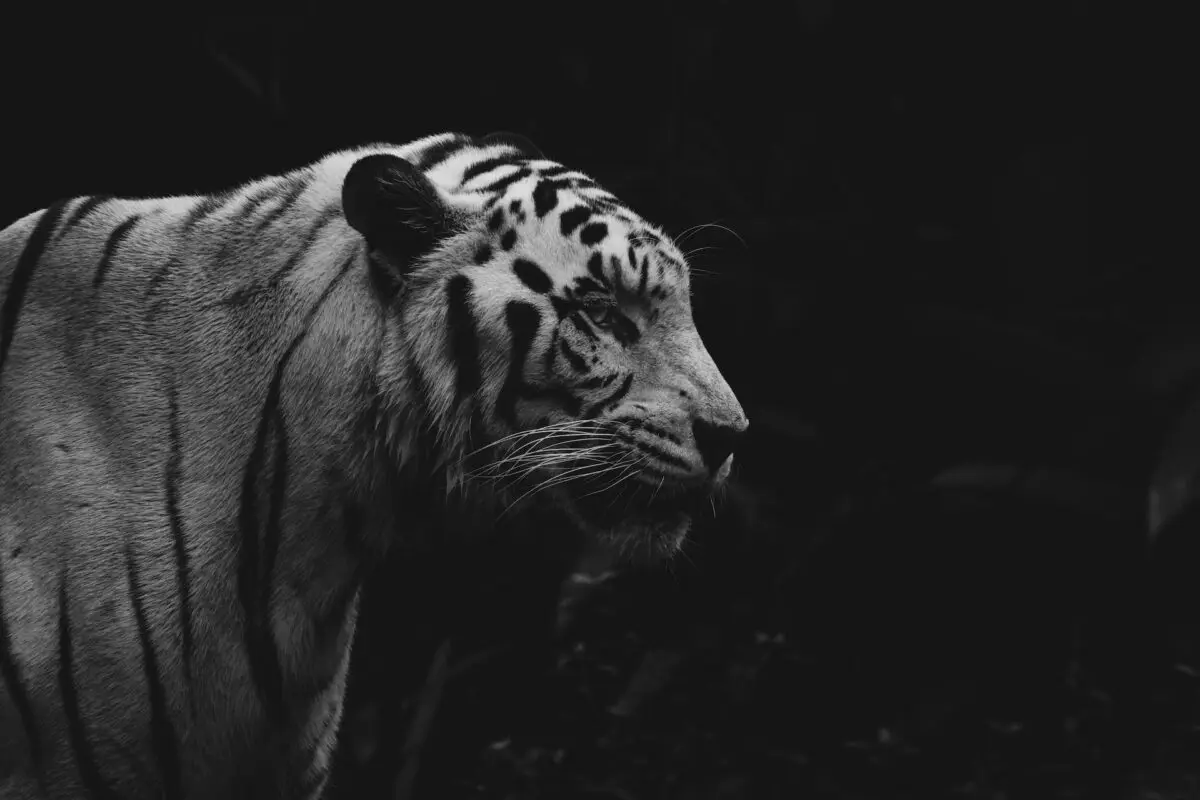This post will be comparing two incredibly powerful predators: the White Tiger Vs. Black Bear.
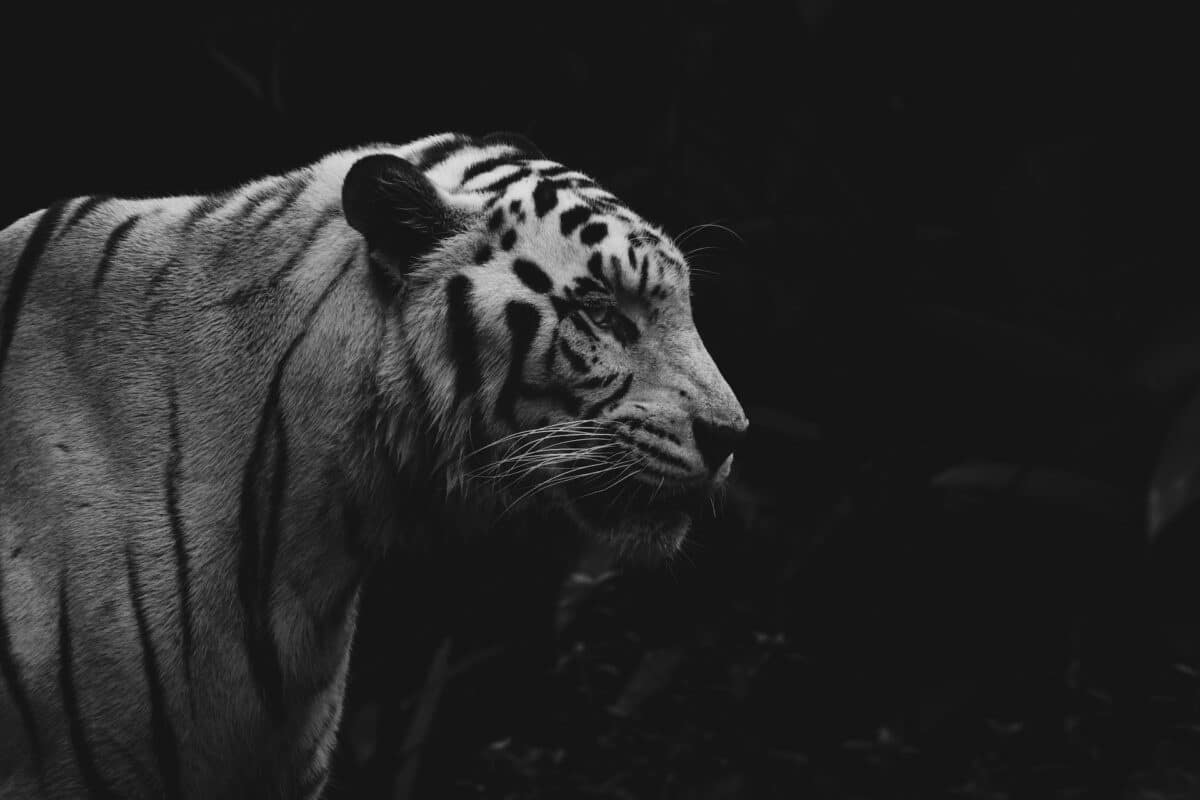
The natural world is fascinating and complex, full of wonder and intrigue. Among its many inhabitants are two powerful predators, the white tiger and the black bear. Both possess unique traits and characteristics that make them formidable hunters in their respective ecosystems – but how many of these differ, and what do they have in common?
With its striking appearance and graceful movements, the white tiger symbolizes strength and beauty. This majestic creature is known for its agility and speed, as well as its sharp claws and powerful jaws.
On the other hand, the black bear is a formidable foe with massive claws and an imposing presence; they are excellent hunters and scavengers. These bears are known for their strength and resilience and are found throughout North America, Europe, and Asia.
This article will compare these remarkable animals, exploring their physical features, sizes, diets, habitats, and reproduction methods. And maybe more importantly, we’ll also look into their respective endangered status.
Let’s dive into it!
If you want to jump ahead, click on any section below:
An Introduction
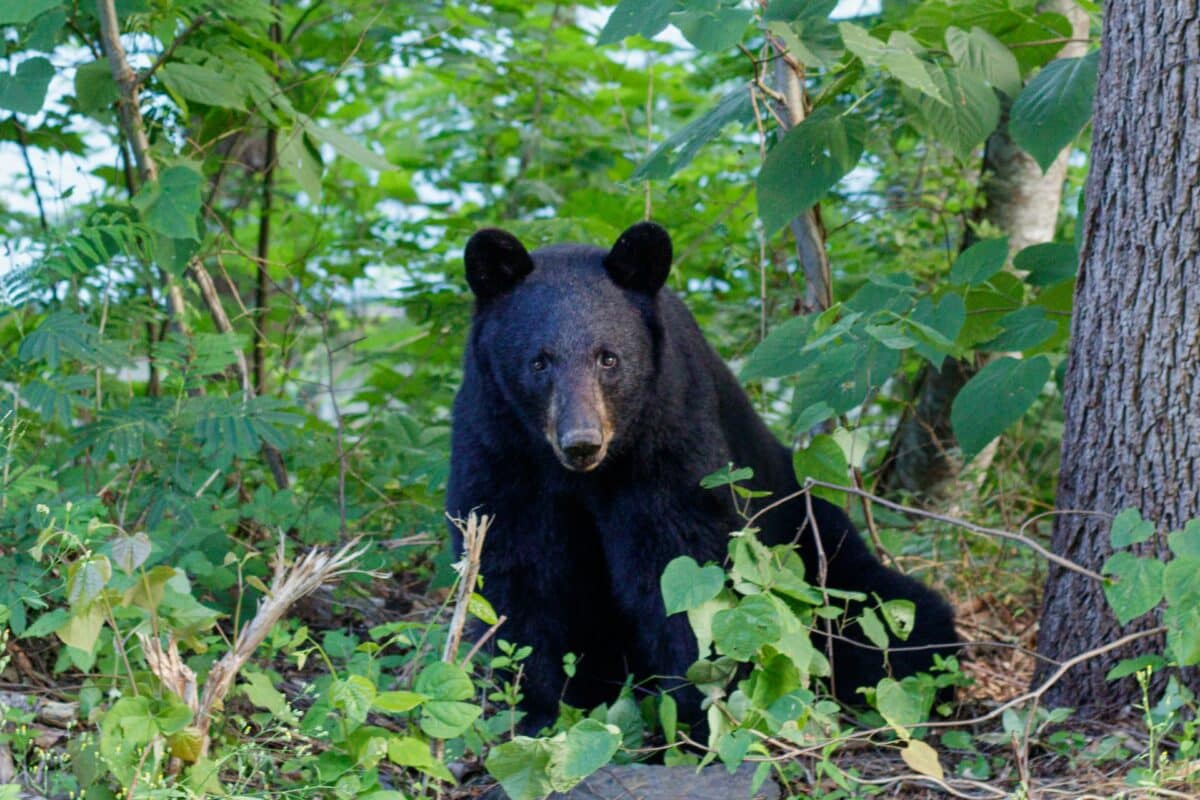
The white tiger (Panthera tigris) and the black bear (Ursus americanus) are two of the most iconic predators in the animal kingdom. Though they may appear on opposite ends of the spectrum, they share many common characteristics.
Physical Features
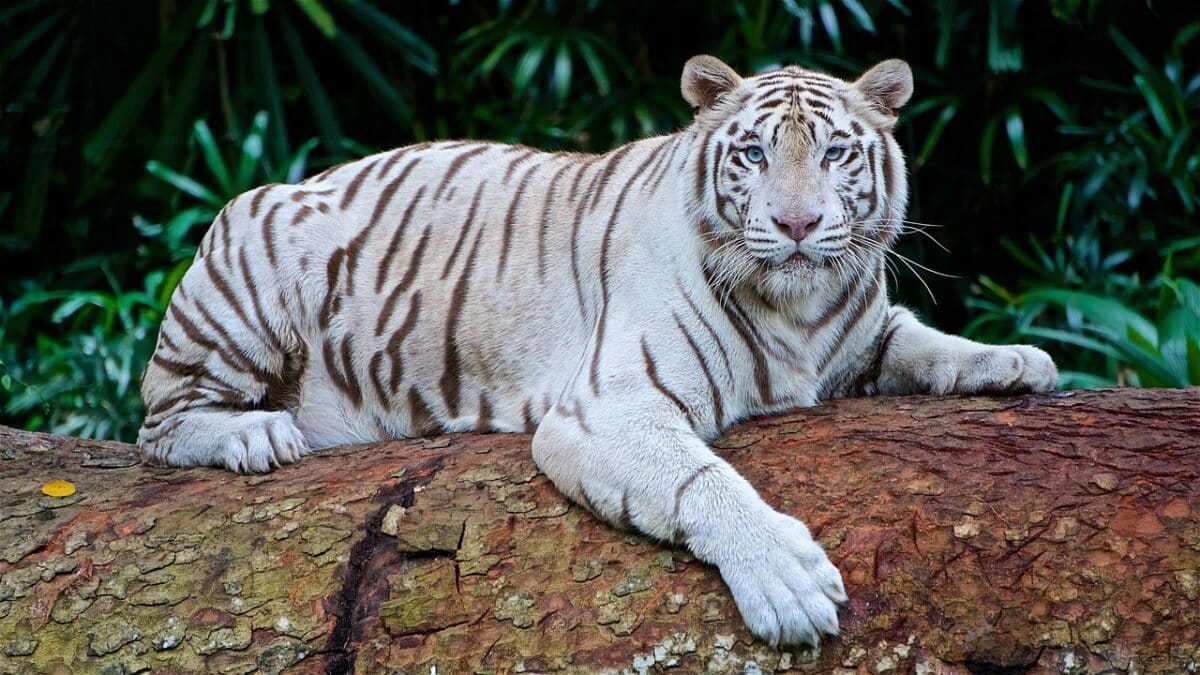
White tigers are one of four subspecies of Panthera tigris and have distinctive white coats with black stripes, bright blue eyes, and long pale whiskers. They also have powerful legs that can propel them over large distances.
Black bears, on the other hand, are typically jet-black but may have brown, cinnamon, or even white fur, depending on their location. They have short snouts compared to other bear species and small round ears. Black bears also have sharp claws, which they use to dig for food or climb trees.
Size
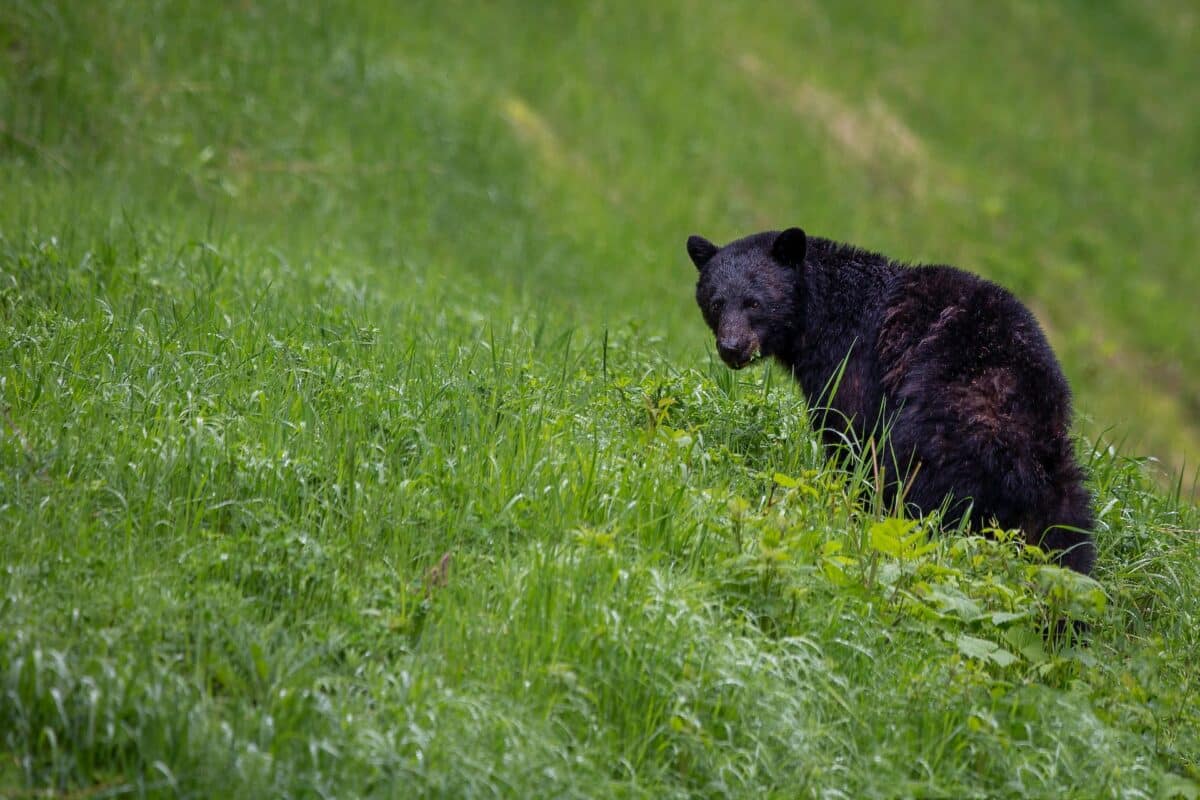
White tigers weigh between 300 and 500 lbs when fully grown. Black bears are much larger animals; adult males typically reach 600 lbs, with some specimens weighing up to 800 lbs.
In terms of height, a white tiger measures up to 11 feet long (head to tail.) The average black bear is around 7 feet long (head to tail), with exceptional specimens measuring up to 8 feet.
Diet
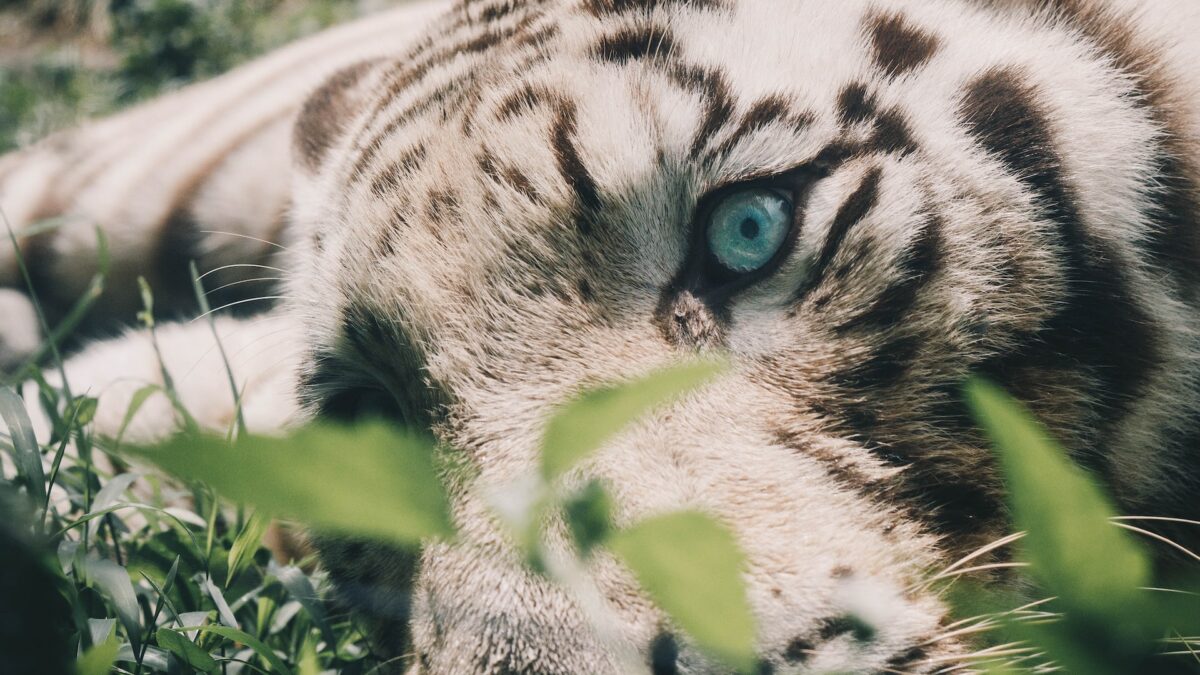
White tigers are carnivores, and their diet consists mainly of large animals such as deer, wild boar, and buffalo. They will also sometimes scavenge for food if required.
Black bears are omnivores and have a much larger range of dietary options. They consume plants, nuts, fruits, insects and larvae, fish, small mammals, carrion, and more depending on the season and availability of resources.
Habitat
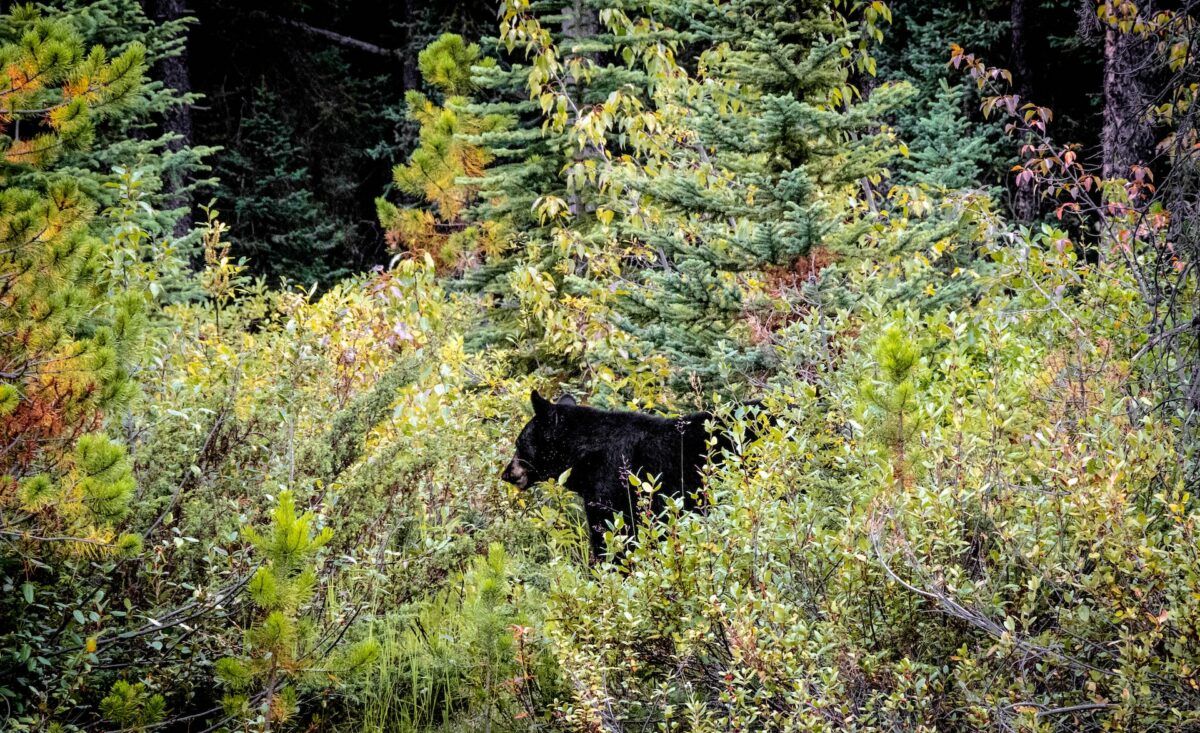
White tigers live mostly in the forests of India and Nepal but can also be found in other parts of south Asia. They prefer areas with dense vegetation where they can hide from potential predators while still being able to hunt for food.
Black bears are found throughout North America and reside in various habitats ranging from woodlands and forests to mountain meadows, tundra, and even coastal areas.
Reproduction

White tigers typically mate in winter, and the gestation period is about 3.5 months long. Litters usually consist of one to four cubs which stay with the mother until they reach 18-22 months old before going out on their own.
Black bears also mate in the winter and give birth during springtime. They have an average litter size of two or three cubs, remaining with their mothers until they’re around 18 months old.
Sexual Maturity
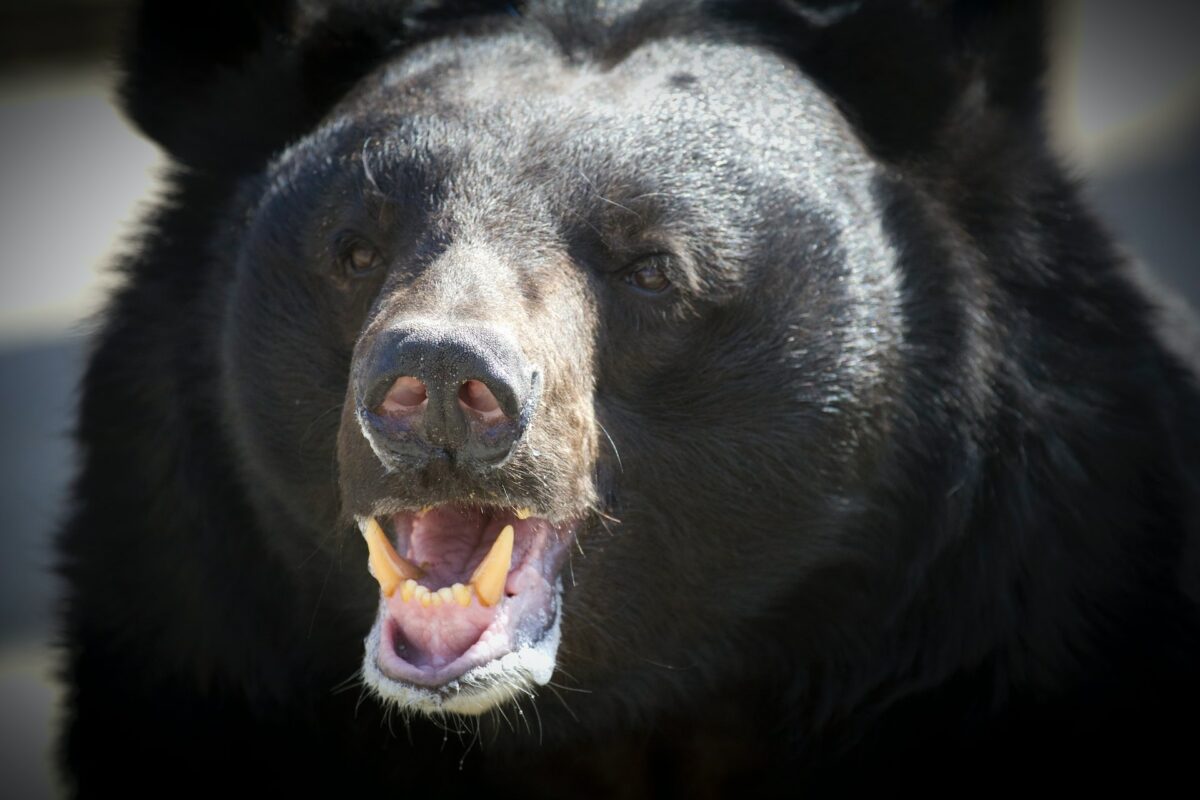
White tigers reach sexual maturity around the age of three and usually mate for life with one partner. They engage in courtship behavior, such as grooming and presenting gifts to one another before mating.
Black bears reach sexual maturity at around two years old. In contrast to the monogamous white tiger, they are known to be promiscuous animals, mating with multiple partners throughout their lives.
Social Life
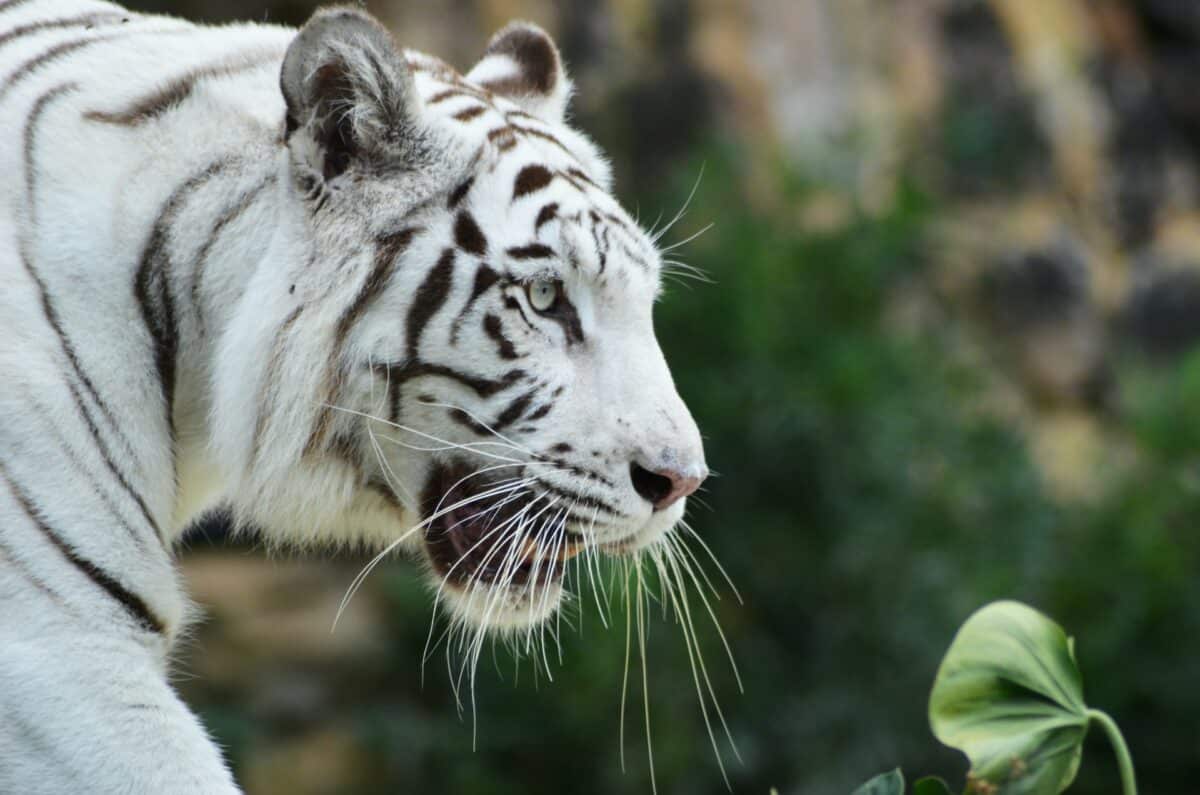
White tigers are generally solitary animals and do not form social groups or live in packs. They are territorial animals and typically establish and defend a home range that they will not allow other tigers to enter.
Female tigers are more social than males, occasionally forming small groups with their offspring. However, these groups are only temporary; the females will eventually separate from their offspring once they reach maturity.
In contrast, black bears are generally more social animals. They do not form large packs or social groups like wolves or primates, but they are known to interact and communicate with other bears in their vicinity.
Moreover, black bears are not territorial like tigers and will tolerate the presence of other bears in their home range as long as they do not perceive them as a threat. Cubs will stay with their mother for up to two years, during which time they will learn essential survival skills and social behaviors from their mother.
Additionally, male black bears have been observed forming social bonds with other males during the mating season. These bonds are temporary and primarily focused on competing for access to females. Nonetheless, they demonstrate a level of social interaction rare in solitary predators like tigers.
Endangered Status: White Tiger Vs. Black Bear
White tigers have come to be classified as endangered due to their loss of habitat resulting from deforestation and poaching. There are currently only about 2,500 individuals left in the wild.
Conversely, the International Union for Conservation of Nature (IUCN) considers black bears a species of most minor concern. However, they face threats such as overhunting and habitat loss from development projects. This could lead to population decline if not appropriately addressed.
Frequently Asked Questions: White Tiger Vs. Black Bear
While white tigers and black bears can live in the same habitat, they would likely compete for the same food sources and territory.
In the wild, it is rare for these two predators to contact each other.
White tigers are agile and fast. They use their pointed claws and mighty jaws to catch their prey.
Black bears are opportunistic hunters and scavengers who use their strength and tenacity to take down prey and access food sources.
The diet of each species varies greatly, with White Tigers primarily hunt large ungulate prey such as antelope, deer, wild boar, and wild sheep. Meanwhile, Black Bears tend to feed on fruits, nuts, roots, insects, and small animals like rodents or fish when available.
White Tigers inhabit the moist evergreen forests and subtropical moist deciduous forests of India and parts of Bangladesh. At the same time, Black Bears are found in various habitats throughout North America, including mountains, meadows, tundra, and even urban areas.
White Tigers are generally solitary creatures that live alone or with a mate for short periods during the breeding season. Black Bears typically spend their days alone but may join together in groups when abundant food is available.
The Final Take
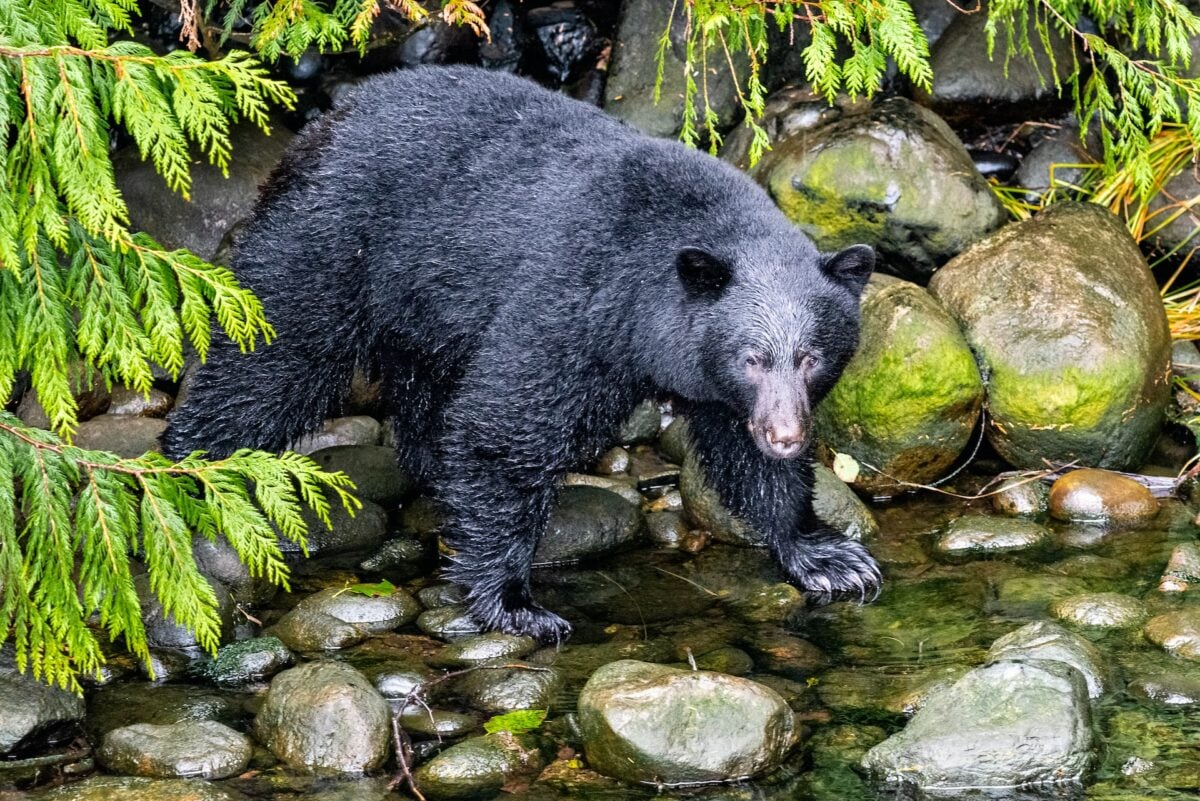
| Key Points |
| White Tiger and Black Bear’s unique traits and characteristics make them formidable hunters in their respective ecosystems. |
| White tigers have distinctive white coats, whereas, black bears are typically jet-black but may have brown, cinnamon, or even white fur, depending on their location. |
| Black bears are much larger animals than white tigers, adult males usually reach 600 lbs. |
| White tigers are generally solitary animals, whereas, black bears are more social animals |
| White tigers and black bears can live in the same habitat, they would likely compete for the same food sources and territory. |
To conclude, White tigers and black bears are similar in that they are ferocious predators. Both animals are essential in keeping the ecological balance in the place they inhabit. As apex predators, they help keep healthy populations of potential prey species, which can benefit other species.
But on the other hand, their physical features, diet, habitat preferences, and reproductive strategies are all quite different. In terms of endangerment, white tigers are much more vulnerable than black bears due to the small population size in the wild.
Overall, white tigers and black bears differ significantly from one another, but both animals are awe-inspiring creatures that should be appreciated for their unique roles in nature! We need to understand these wonderful creatures better and strive to protect them.
Thank you for reading this article on the White Tiger Vs. Black bear! If you enjoyed this read, you should also take a look at our comparison of the Polar Bear Vs. Grizzly Bear or a Pack of Wolves Vs. Grizzly Bear.
Join our Forum for free today!


